


A Path To Sustainable Resource Management

Water is a finite and precious resource, and as the world grapples with increasing water stress, it is essential to adopt water conservation methods. These practices help reduce water wastage, preserve freshwater sources, and promote sustainable resource management. This article explores various water conservation methods and their significance in addressing global water-related challenges.
Understanding Water Conservation
Water conservation refers to the careful and efficient use of water resources to minimize waste and ensure the availability of clean water for present and future generations. It is a multifaceted approach that encompasses a wide range of practices at the individual, community, and industrial levels.
Effective Water Conservation Methods
Fixing Leaks: One of the most basic yet crucial methods is fixing leaks in plumbing systems. A dripping faucet or a leaky pipe can waste significant amounts of water over time.
Low-Flow Fixtures: Installing low-flow faucets and showerheads is an effective way to reduce water consumption without compromising water pressure or functionality.
Dual-Flush Toilets: Dual-flush toilets provide two flushing options, allowing users to select a lower volume for liquid waste and a higher volume for solid waste.
Irrigation Efficiency: Employing efficient irrigation systems, such as drip irrigation and soaker hoses, can reduce water use in landscaping. Additionally, watering during cooler parts of the day helps minimize evaporation.
Rain Barrels And Cisterns: Collecting rainwater in barrels or cisterns can provide a free source of water for outdoor use, such as watering gardens and lawns.
Landscaping Practices: Using native plants and xeriscaping, a landscaping technique that conserves water, can significantly reduce the need for irrigation.
Water Recycling: Greywater systems can be used to collect and treat water from sinks, showers, and washing machines for reuse in flushing toilets or watering plants.
Educational Campaigns: Public awareness and educational programs play a crucial role in promoting water conservation and responsible water use.
The Significance Of Water Conservation
Water conservation methods hold significant importance for several reasons:
Resource Sustainability: By conserving water, we help ensure the sustainability of finite freshwater sources, which is critical in the face of growing water scarcity.
Environmental Protection: Reduced water consumption lowers the demand on rivers, lakes, and aquifers, protecting the ecosystems that rely on these water bodies.
Energy Efficiency: Water treatment and distribution require substantial energy. Reducing water use leads to lower energy consumption and fewer carbon emissions.
Financial Savings: Water conservation measures can lead to reduced water bills for individuals, households, and businesses.
Climate Resilience: As climate change contributes to shifting weather patterns and more frequent droughts, efficient water use becomes essential for building climate resilience.
Water conservation methods are indispensable for responsible resource management and addressing global water challenges. As individuals, communities, and industries adopt these practices, we can make significant strides toward a more sustainable and water-secure future. By fostering a culture of water conservation, we not only protect this vital resource but also contribute to a greener and more resilient world for generations to come.

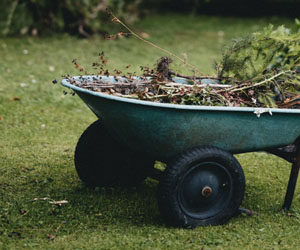
Keeping Your Garden Beautiful And Healthy
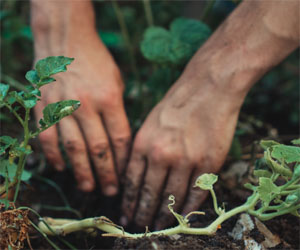 Preventative Measures:
Preventative Measures:
The first step in effective weed management is prevention. Here are some strategies to consider:
Mulching: Apply a layer of organic mulch to your garden beds. Mulch not only conserves soil moisture and regulates temperature but also suppresses weed growth by blocking out sunlight.
Landscape Fabric: Landscape fabric or weed barrier cloth can be placed under mulch to provide an extra layer of weed control. It allows water to pass through while inhibiting weed growth.
Plant Density: Plant your garden densely to create competition for sunlight and nutrients, leaving less room for weeds to take hold.
Regular Inspection: Routinely inspect your garden for early signs of weeds. It's much easier to deal with a few weeds when they're small than to tackle a full-blown infestation.
Manual Weed Removal:
When weeds do appear, one of the most effective ways to manage them is through manual removal. Here's how to do it:
Use The Right Tools: Invest in a good set of hand tools for weeding, including a hand trowel, weeder, and a sharp hoe.
Get To The Roots: When weeding, it's crucial to remove the entire plant, including the roots. Weeds left with their roots intact can quickly grow back.
Weed After Rain Or Irrigation: It's easier to remove weeds when the soil is moist. Weeding shortly after rain or watering can make the task less labor-intensive.
Proper Disposal: After weeding, make sure to dispose of the pulled weeds properly. Don't leave them in your garden, as some weeds can regrow from detached pieces.
Leading The Way To Self-Sufficiency And Sustainability
 Off-grid pioneers are adventurers who have chosen to break free from the shackles of modern civilization, to take a step back from the hustle and bustle of urban life, and to reconnect with the natural world. They often opt for remote locations, nestled in the heart of nature, where they build sustainable homes, harness renewable energy sources, and cultivate their own food. Their goal is to reduce their ecological footprint and live in harmony with the environment.
Off-grid pioneers are adventurers who have chosen to break free from the shackles of modern civilization, to take a step back from the hustle and bustle of urban life, and to reconnect with the natural world. They often opt for remote locations, nestled in the heart of nature, where they build sustainable homes, harness renewable energy sources, and cultivate their own food. Their goal is to reduce their ecological footprint and live in harmony with the environment.
One of the defining characteristics of these pioneers is their resourcefulness. They are masters of ingenuity, using their creativity to overcome challenges that come with living off the grid. From constructing eco-friendly homes using natural materials to repurposing everyday items for new purposes, they exemplify the art of making do with what they have.
Adaptability is another key trait of off-grid pioneers. They understand that living off the grid requires flexibility and the ability to embrace change. These individuals are constantly learning new skills, from foraging for wild edibles to harnessing solar or wind energy, and are quick to adapt to the dynamic conditions of life in the wilderness.
Moreover, these pioneers are committed to reducing their environmental impact. They use renewable energy sources like solar panels and wind turbines, collect rainwater, and practice composting and recycling.
Building Sustainable Communities For A Better Future
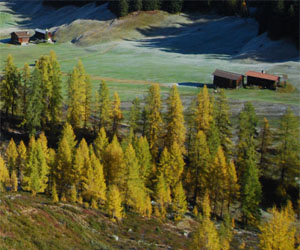
Principles Of Eco-Villages:
Sustainability: Eco-villages are built on principles of sustainability. This encompasses eco-friendly housing, renewable energy sources, and a focus on reducing waste and energy consumption. Sustainable farming and food production are also key elements, with many eco-villages aiming to be self-sufficient in terms of food.
Low Environmental Impact: These communities strive to have a minimal impact on the environment. This often means eco-friendly construction, waste reduction and recycling, sustainable water management, and the use of renewable energy sources like solar panels or wind turbines.
Community And Connection: A strong sense of community is a hallmark of eco-villages. Residents often engage in decision-making processes together and foster a culture of shared responsibility. This sense of connection promotes social well-being and harmony.
Education And Learning: Many eco-villages emphasize learning and education, particularly in the areas of sustainability and eco-conscious practices. Workshops, seminars, and communal learning opportunities are common.
Cultural And Artistic Expression: Creativity and cultural expression often flourish in these communities, with residents embracing arts, music, and cultural activities that promote a sense of belonging and fulfillment.
Benefits Of Eco-Villages:
Environmental Stewardship: Eco-villages are on the forefront of environmental stewardship. By living in a sustainable, low-impact manner, residents reduce their ecological footprints and serve as models for sustainable living for the broader community.
Sustainable Living: These communities demonstrate that it is possible to live a comfortable and fulfilling life while minimizing environmental impact. They showcase the practicality of eco-conscious technologies and practices.
Strong Social Bonds: Eco-villages prioritize strong social bonds and a sense of community. Residents often share responsibilities, resources, and a commitment to a shared vision. This enhances the overall well-being of community members.
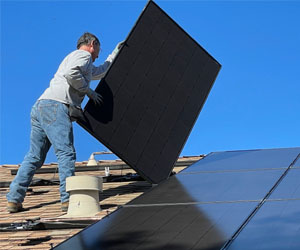
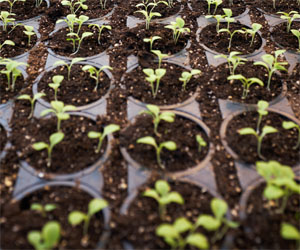
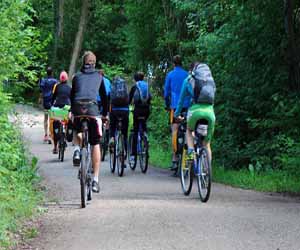
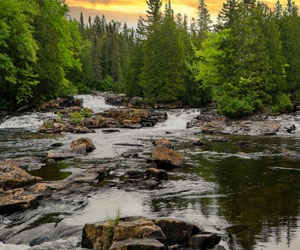
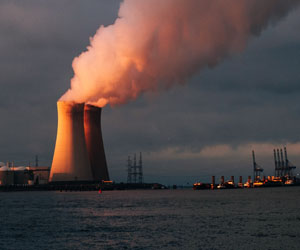
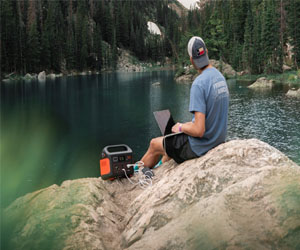
Shaping Spaces For Comfort And Functionality
 Functional Layout: An effective housing design starts with a well-thought-out floor plan. It considers the practical needs of residents, from the number of bedrooms and bathrooms to the placement of the kitchen and living areas. An efficient layout maximizes space utilization and minimizes wasted square footage.
Functional Layout: An effective housing design starts with a well-thought-out floor plan. It considers the practical needs of residents, from the number of bedrooms and bathrooms to the placement of the kitchen and living areas. An efficient layout maximizes space utilization and minimizes wasted square footage.
Aesthetics: While functionality is paramount, aesthetics are equally important. Aesthetically pleasing design can enhance the quality of life for residents. The choice of materials, colors, and architectural elements can create a sense of comfort, style, and identity within the home.
Sustainability: Sustainable housing design is on the rise, driven by a growing awareness of environmental concerns. Green building practices focus on using eco-friendly materials, energy-efficient technologies, and renewable energy sources to minimize the carbon footprint of a home.
Adaptability: Housing design should be flexible and adaptable to accommodate the changing needs of its inhabitants. This is particularly important in a world where the dynamics of families and lifestyles evolve over time. Features like convertible spaces and modular furniture are becoming more popular.
Accessibility: Accessibility is a critical aspect of housing design. It ensures that homes can be comfortably and safely used by people of all ages and abilities. Features like wider doorways, no-step entries, and accessible bathroom and kitchen designs are integral to inclusive housing.
Natural Light And Ventilation: Designers are increasingly focusing on maximizing natural light and ventilation in homes. Well-placed windows and open floor plans can significantly improve the quality of life for residents while reducing the need for artificial lighting and climate control.
A Small Step Toward A Sustainable Future
 Sustainable Ingredients: Planet-conscious cleaning products use sustainable, biodegradable ingredients that break down naturally without harming ecosystems. This reduces the impact on waterways, marine life, and overall environmental health.
Sustainable Ingredients: Planet-conscious cleaning products use sustainable, biodegradable ingredients that break down naturally without harming ecosystems. This reduces the impact on waterways, marine life, and overall environmental health.
Conservation Of Resources: By choosing eco-friendly cleaning practices, we can reduce water and energy consumption. This is crucial for conserving precious resources and reducing our carbon footprint.
Effective Planet-Conscious Cleaning Practices
Eco-Friendly Cleaning Products: Seek out cleaning products that have earned eco-friendly certifications, like the "EcoLogo" or "Green Seal." These certifications ensure that the products meet rigorous environmental and health standards.
Homemade Cleaning Solutions: Making your own cleaning solutions from ingredients like vinegar, baking soda, lemon juice, and essential oils is an excellent way to embrace planet-conscious cleaning. These natural components are effective for various cleaning tasks and are safe for your health and the environment.
Reusable Cleaning Tools: Invest in high-quality reusable cleaning tools such as microfiber cloths, mop heads, and scrubbing brushes. These tools efficiently capture dirt and dust, reducing the need for disposable cleaning supplies and cutting down on waste.
Energy-Efficient Cleaning Appliances: Choose energy-efficient cleaning appliances, such as vacuum cleaners and steam cleaners, to reduce energy consumption while maintaining effective cleaning power.